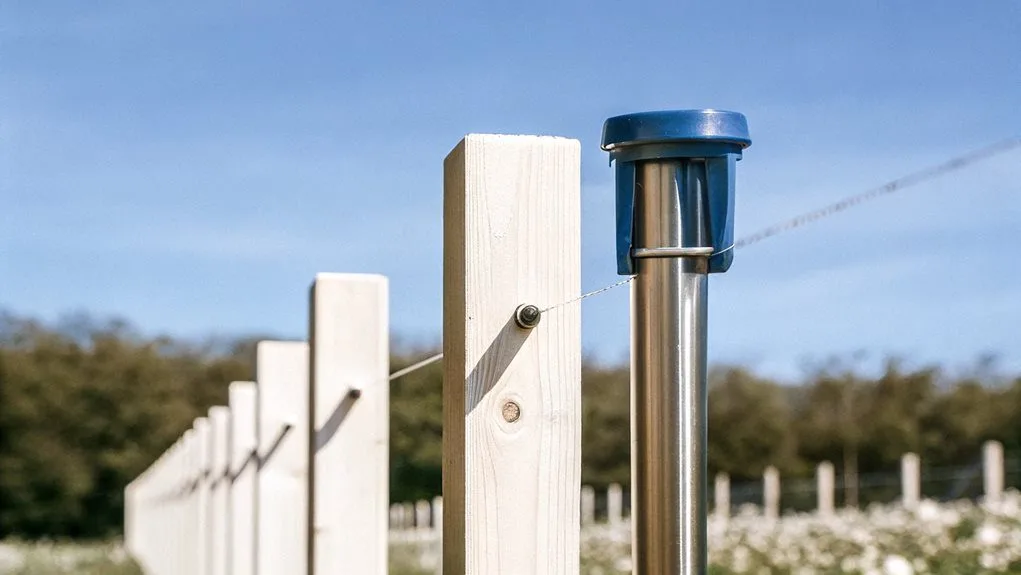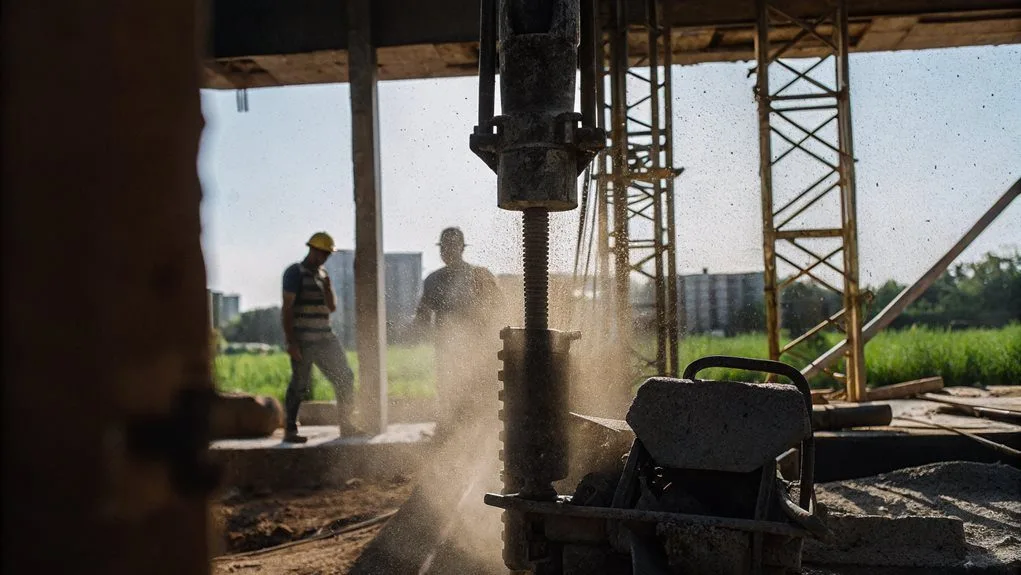Of course, you can use TLBs on the farm. Who wouldn’t want a machine that digs, trenches, and levels like a boss? They handle rough terrain, pop down that irrigation pipe, and clear land like it’s a walk in the park.
Sure, they can get stuck in mud and switching attachments feels like a workout sometimes, but the trade-off is worth it. Interested in how costs and regulations play into all this? Stick around!
Key Takeaways
- TLBs are versatile and can efficiently dig, trench, and level ground for various agricultural tasks.
- Hiring TLBs is practical for tasks like irrigation pipe installation and land clearing on farms.
- Costs for hiring TLBs in agriculture vary based on equipment type and rental duration.
- Regulatory compliance, including operator certification and machinery permits, is essential for TLB use on farms.
- Despite their advantages, TLBs can face challenges like getting stuck in muddy terrain and high maintenance costs.
Advantages of TLBs in Agricultural Operations
Let’s be honest; if you’re running a farm and you’re not using a TLB, are you even trying?
Seriously, these aren’t just fancy toys for the farm.
TLBs are your trusty sidekicks, traversing rough terrain like they own it. Their regular availability ensures that you’ll always have the tools you need when you need them.
Compact enough to squeeze into tight spots, they’re essential when tackling tasks like loading or trenching. Additionally, with the rise in demand for multi-tool equipment, TLBs have become an even more desirable asset for maximizing productivity.
Plus, with a backhoe at your disposal, digging’s a breeze—how else are you going to install that irrigation system without some sweat?
And let’s not forget quick-hitch systems that make switching attachments so easy, you’ll wonder why you ever struggled before.
TLBs save you time and money, so why wouldn’t you want one around, right?
The question isn’t whether to use a TLB, but how soon you can get one.
Common Agricultural Tasks Performed by TLBs
So, you’ve got your trusty TLB—now what? Well, you could just admire it, but let’s be honest, it’s way too expensive for that.
You can dig and trench for those irrigation pipes, or tackle levelling ground to prep for new structures.
Need to clear land? TLBs will happily move rocks and debris like it’s nothing. Tractor Loader Backhoes are also ideal for medium-sized jobs on farms, such as laying pipes or grading roads. They are incredibly versatile and excel at clearing rough terrain, making them a valuable asset on any farm.
On bigger farms, they handle everything from stump pulling to moving pesky rubble. Plus, they’re perfect for spreading gravel on farm roads—because who wants a bumpy ride?
Oh, and if you’re into multitasking, TLBs will clear boundaries and help with soil preparation too. So, when are you going to put that machine to work? Seriously, it’s calling your name!
Cost Considerations for Hiring TLBs
Why’s it so complicated to figure out the cost of hiring TLBs? You’d think it’d be straightforward, but it’s like piecing together a jigsaw puzzle.
Daily rates for tractors can reach R7,200 in places like Cape Town, whilst a standard backhoe might be R4,305.
But wait—add attachments and operator training, and suddenly you’re looking at a whole different ballpark. Backhoes are multipurpose earthmoving machines that provide excellent versatility on any site.
Sure, you could just forget about attachments, but then what’re you digging with?
And let’s not forget those pesky extra charges that might crop up if you change your rental duration.
All this just makes budgeting feel a bit like herding cats. Seriously, who knew hiring a TLB could be this perplexing? Additionally, considering the daily rate for 25 HP Tractor, it’s essential to factor in various pricing elements when planning your budget.
Regulations and Compliance for TLB Use in Agriculture
Hiring TLBs can feel like a maze of costs, but the fun doesn’t stop there. You’ve got regulations to handle, too!
First off, if your machinery’s wider than 3.7 metres, get ready for special permits and those lovely fluorescent flags. It’s like a parade, but not the fun kind.
If your TLB’s wider than 3.7 metres, expect permits and fluorescent flags—your very own not-so-jolly parade!
Want to drive on the motorway? Good luck avoiding certain routes like major toll roads—those are off-limits for your TLB.
Also, you better be certified, or you’re just practising your digging skills. Remember, certification is required if you plan to operate the backhoe loader to ensure compliance.
And let’s not forget about lighting—your TLB needs to glow like a Christmas tree.
All this just to move dirt? Who knew farming could be this complicated! But hey, at least it keeps things interesting, right?
Challenges of Using TLBs on the Farm
Challenges of Using TLBs on the Farm
Using a TLB on the farm can feel like trying to solve a Rubik’s cube whilst blindfolded. You think you’ve got control, then—bam!—you’re stuck in muddy terrain, and now what?
Sure, they’re versatile, but in tight spaces? Forget it. Trying to dig deep? Good luck with that! In addition, the lift capacity needed for many farm tasks can exceed what TLBs are equipped to handle efficiently.
You’ll spend half your day switching attachments and the other half wondering if it’s even worth it.
Don’t get me started on maintenance—it’s a love-hate relationship, and the costs can leave you reeling.
And let’s be honest, heavier equipment like dedicated backhoes usually crush the competition.
Conclusion
So, you’re still wondering if TLBs are worth it on your farm? Seriously? Think about it. Why haul dirt by hand when you could let a TLB do the heavy lifting? Sure, it costs a bit to hire one, but think of all the time—and back pain—you’ll save. And let’s be honest, who doesn’t want a shiny tractor hanging around? Don’t let fear of regulations hold you back. If your neighbor has one, you’ve got all the excuses to make it happen!






